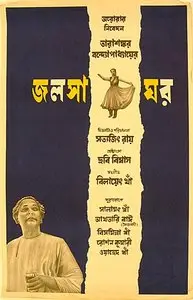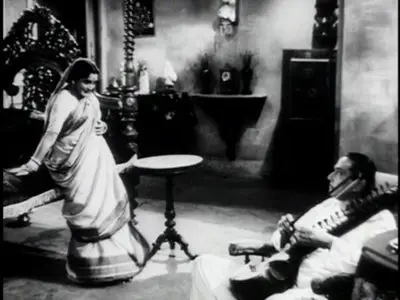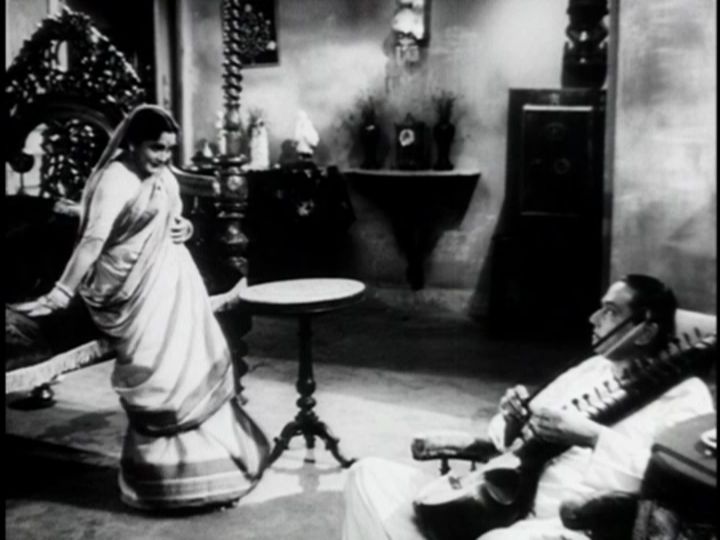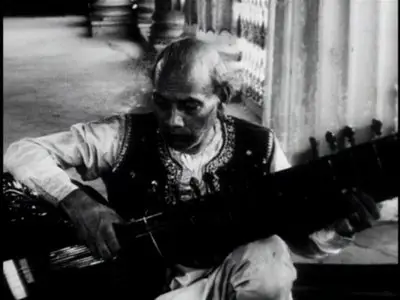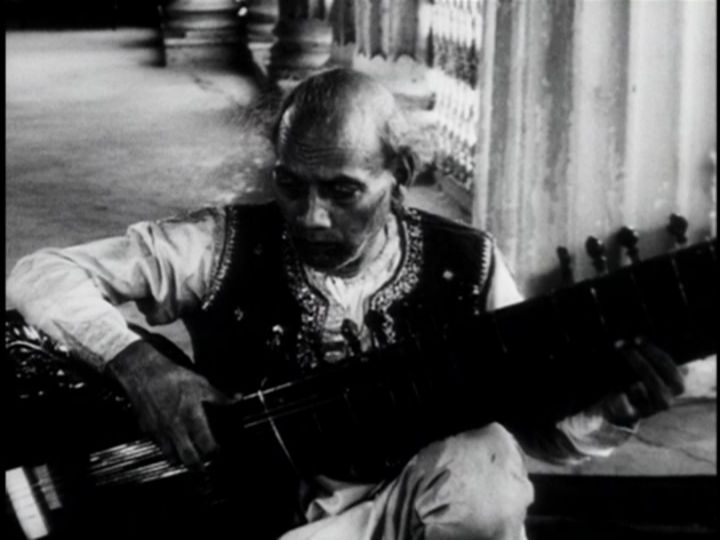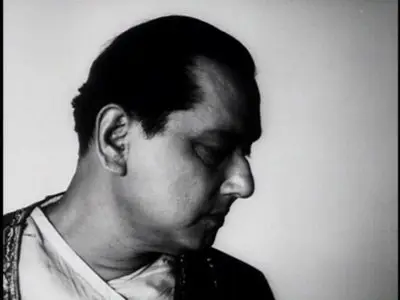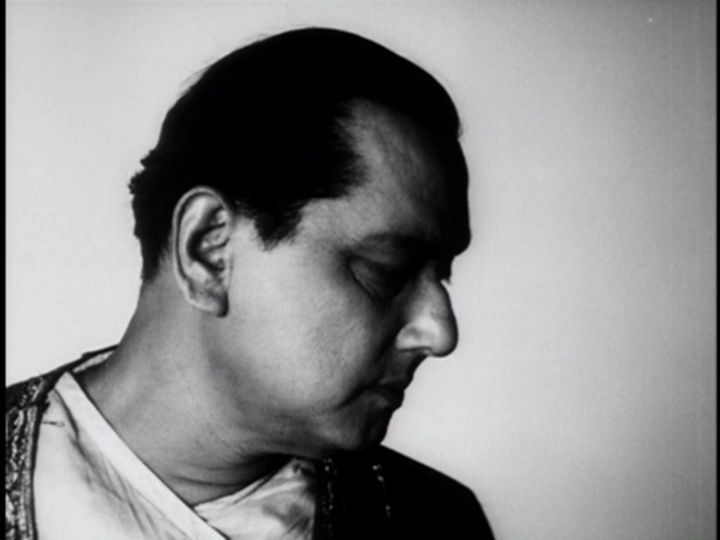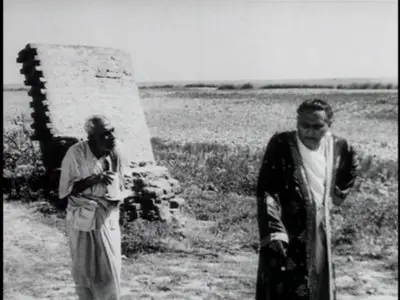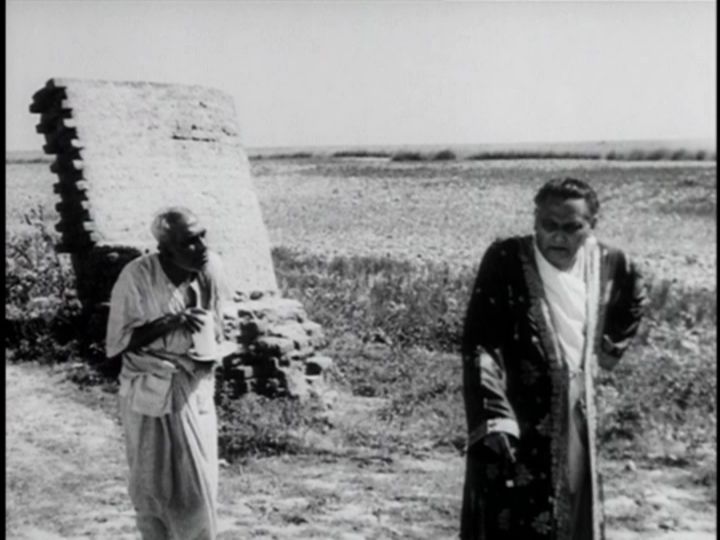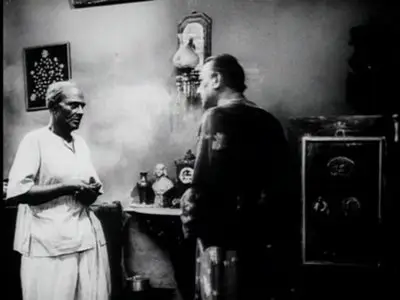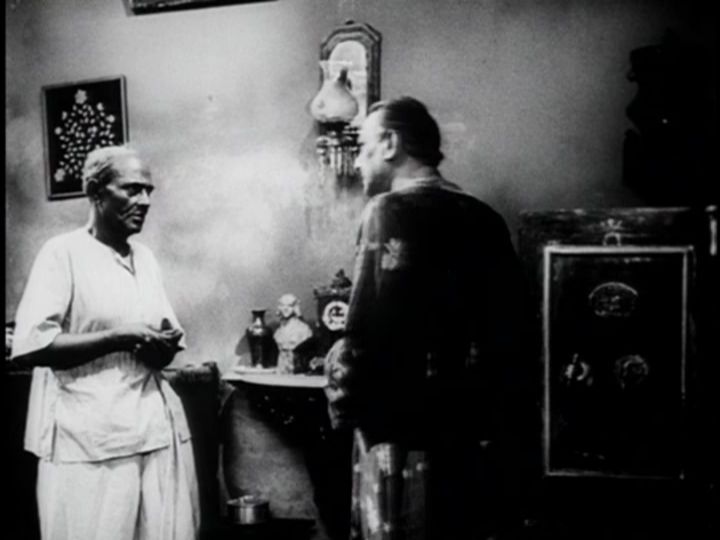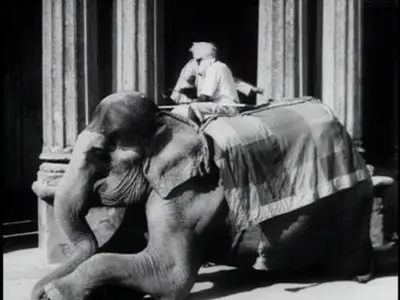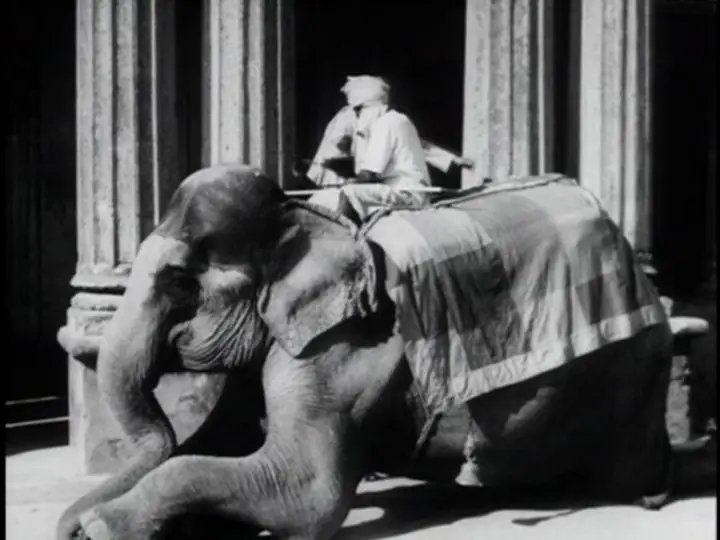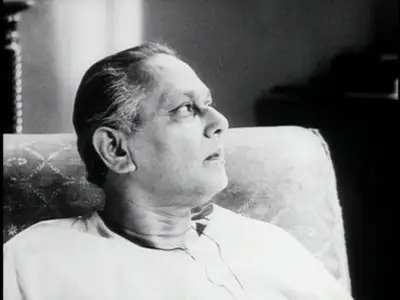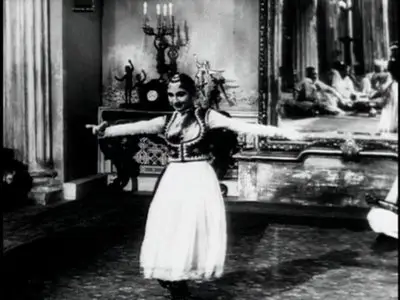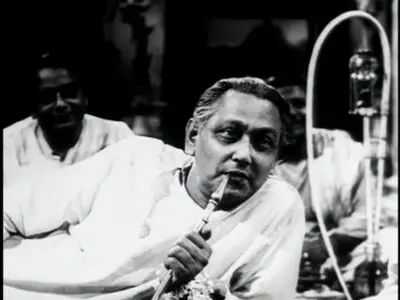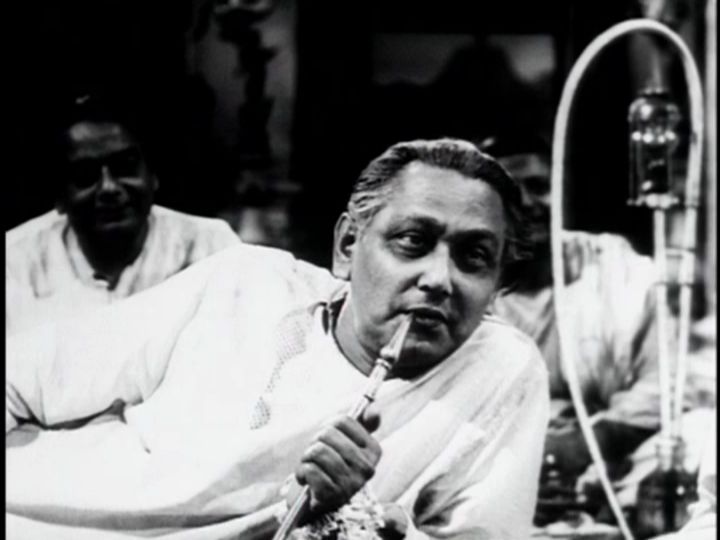Jalsaghar / The Music Room (1958)
DVD5 | ISO | NTSC 4:3 (720x480) | 01:33:46 | 3,87 Gb
Audio: Bengali AC3 2.0 @ 192 Kbps | Subs: English, French
Genre: Drama, Music | 1 win | Black & White | India
DVD5 | ISO | NTSC 4:3 (720x480) | 01:33:46 | 3,87 Gb
Audio: Bengali AC3 2.0 @ 192 Kbps | Subs: English, French
Genre: Drama, Music | 1 win | Black & White | India
India's greatest director, Bengalese Satyajit Ray was recipient of numerous awards in his career. Typical of the styling of cinema he created, he kept them unceremoniously out of view under his bed, aware of the lavish presentation they would make displayed out in the more public rooms of his Calcutta home. This noble air of subtlety is also apparent in his film-making with Jalsaghar (The Music Room) being a perfect example.
The film's major character is Huzur Biswambhar Roy who is a zemindar (the now ancient concept of an aristocratic landlord). He is shown as a tragic figure who is both a victim of his selfish pride and superfluous belief in his own nobility.
Ray has made a profound and magnificent exploration of one man's obsolescence in a modern developing society in 1920's India.
IMDB
This film is a moody and evocative portrait of a physically and emotionally isolated man who is mourning the death of his only son, his wife, and his formerly lavish way of life. The distinguished Bengali actor Chhabi Biswas gives an outstanding performance as Huzar Biswambhar Roy, a once-happy and prosperous landowner who used to spend his evenings in the music room (or jalsaghar) of his magnificent palace. There he would sit on priceless carpets under magnificent chandeliers and admire himself in a large ornate mirror as he watched the best Bengali dancers and musicians perform.
Huzur is reminded of this opulent past by a tendril of music emanating from the house of his annoying nouveau riche neighbor, Mahim Ganguly (Gangapanda Basu) who likes to throw his good fortune in Huzar's face. Ganguly hosts the kind of lavish parties Huzar used to host, while Huzar's music room sits as empty and cold as his wounded heart.
Finally, unable to stop Ganguly's taunting, Huzar uses his last 500 rupees to reopen the jalsaghar for one more glorious performance. The loyal manager of his estate, Taraprasanna (Tulsi Lahiri) tries to stop him, but it's hopeless.
This film, made in 1958, is an excellent example of Satyajit Ray's ability to evoke mood. The desolation of the crumbling palace is the perfect visual metaphor for Huzar's inner state. For fans of Ray's work, this is a must-see example.Luanne Brown, amazon.com
Criticized for the lack of Indian cultural acceptance of his films, Ray purposely included a few musical numbers in Jalsaghar, although totally different from the Bollywood style cinema that is so popular with his countrymen. The sheer beauty of the final dance sequence is almost an acceptable gesture to understand Huzur's only visible interest; hosting concerts in his grand music room. Too apathetic to even ascertain what month or season it is, he smokes his hookah pipe on the terrace while his ancestors palace visibly crumbles around him. Tragic but also accurate as his egotistical and extravagant exhibitions to upstage his un-pedigreed, self-made neighbor Mahim Ganguly become more and more transparent. His gestures are all an attempt to maintain his presumed superiority granted to him by his birthright.
With comparisons of brass bands and electrical generators over traditional music, as well as the scenes of elephants instead of cars as a means of transport, Ray displays the encroachment of modernization into India. His excessively beautiful film displays the ever-present fact that change must be accepted. As the music room's lavish chandelier flickers, Huzur's most frightening personal affirmation comes when he views himself in a clouded mirror realizing what his behavior has wrought. The damage that his chosen path has dealt him is devastating. His realization is also our own with pride being shown as an overwhelming negative trait. It is a totally gripping cinema experience allowing for days of reflective thought.
The story in this film has the feel of Shakespearean tragedy. Ray wrote the screenplay based on a novel by Tarashankar Banerjee. It's an epic kind of conflict, as much a tension between concepts (the new and the old) as between individuals. Viewers can't especially admire Huzar, but we can mourn the end of an era with a modicum of nostalgia. Ray makes skillful use of symbols, such as the magnificent white stallion, the elephant juxtaposed against an early motorcar, the lightening storm, and a spider crawling up the leg of Huzar's portrait as his empire comes toppling down. The story is well paced throughout.
Ray's cinematography is as fine as that of any filmmaker, in composition and the beautiful high contrast black-and-white photography. With a mise-en-scene comprised mainly of a lavish Indian palace, there's plenty of sumptuous visual beauty.
There are three extended musical events that take place in the jalsaghar. These are treated not merely as interludes but as integral to advancement of the narrative. There is palpable tension in the audience, between Huzar and Mahim. We observe that Mahim is rather uncultured and uncouth. Huzar has to shush him more than once when he begins to talk during a performance. The final dance number with Krishna Bai is among the best performance pieces I've ever seen in a film. If I were to travel to India, what I would most want to do is find a nightclub featuring performance of classical Indian music and dance. This piece seemed to me to be as much the quintessence of India as anything else I could imagine. It combined perfection of foot and body movement, hand and arm gestures, head movements, and facial expressions. The great Ravi Shankar was among the instrumentalists for this film.
The performance by Chhabi Biswas is outstanding and pretty much the heart and soul of the film. Biswas was a legendary stage actor in Calcutta. He was known to be temperamental and troublesome to work with, but a master of his craft. The secondary roles are also well performed.
This is a beautiful film, with gorgeous interiors and magnificent shot composition. There's a very strong lead performance as well as three outstanding musical numbers. This film is as close as I've personally come to a visit to India and a chance to experience its traditional culture. Beyond that, it is an epic tale of the conflict between old and new in changing times. I highly recommend this film.
At the time I post this, only 123 people have cast a vote of any kind for The Music Room. What a shame.
Satyajit Ray is one of the greatest directors of all-time and The Music Room is his masterpiece. Correction: The Music Room is a masterpiece of world cinema.
How to describe this movie? In Hollywood lingo, you could call it Citizen Kane meets Black Narcissus with a big dose of King Lear. Of course, if you called it that, they'd shelve the project and spend the money on the sequel to XXX.
Pity poor Biswambhar Roy, a king in a lonely castle. He's lost not only his family but his entire way of life. He is a mistake. A forgotten man waiting in his empty shell of a world.
He spends the last remnants of his once vast fortune on a final, lavish musical performance in his crumbling home, a last-ditch attempt to connect to the pride and joy he once felt in his life.
Not that he is innocent. He is proud and oblivious, spoiled and selfish. But surely not a bad man. Merely a displaced man. So we can cheer as he is granted one last moment of happiness and weep for him as he meets his inevitable end.
How is that Satyajit Ray remains unknown even to many die-hard cineastes in the States? I hope one of the companies will come along soon and release some of his work on DVD.IMDB Reviewer
Download:
Huge Thanks to Spendiushttp://www.filesonic.com/file/1346553711/SaloMusi.1958.AH.part1.rar
http://www.filesonic.com/file/1346553721/SaloMusi.1958.AH.part2.rar
http://www.filesonic.com/file/1346553881/SaloMusi.1958.AH.part3.rar
http://www.filesonic.com/file/1346553841/SaloMusi.1958.AH.part4.rar
http://www.filesonic.com/file/1346554121/SaloMusi.1958.AH.part5.rar
http://www.filesonic.com/file/1346554221/SaloMusi.1958.AH.part6.rar
http://www.filesonic.com/file/1346554361/SaloMusi.1958.AH.part7.rar
http://www.filesonic.com/file/1346555991/SaloMusi.1958.AH.part8.rar
http://www.wupload.com/file/40418479/SaloMusi.1958.AH.part1.rar
http://www.wupload.com/file/40418478/SaloMusi.1958.AH.part2.rar
http://www.wupload.com/file/40418485/SaloMusi.1958.AH.part3.rar
http://www.wupload.com/file/40418486/SaloMusi.1958.AH.part4.rar
http://www.wupload.com/file/40418491/SaloMusi.1958.AH.part5.rar
http://www.wupload.com/file/40418489/SaloMusi.1958.AH.part6.rar
http://www.wupload.com/file/40418494/SaloMusi.1958.AH.part7.rar
http://www.wupload.com/file/40418493/SaloMusi.1958.AH.part8.rar
http://www.uploadstation.com/file/k7BJcQf/SaloMusi.1958.AH.part1.rar
http://www.uploadstation.com/file/TZfbsGE/SaloMusi.1958.AH.part2.rar
http://www.uploadstation.com/file/DABAyKE/SaloMusi.1958.AH.part3.rar
http://www.uploadstation.com/file/DPJshCe/SaloMusi.1958.AH.part4.rar
http://www.uploadstation.com/file/k4q92u9/SaloMusi.1958.AH.part5.rar
http://www.uploadstation.com/file/28ThePP/SaloMusi.1958.AH.part6.rar
http://www.uploadstation.com/file/pRUE2v5/SaloMusi.1958.AH.part7.rar
http://www.uploadstation.com/file/9uQSq58/SaloMusi.1958.AH.part8.rar
http://www.fileserve.com/file/RkRgApb/SaloMusi.1958.AH.part1.rar
http://www.fileserve.com/file/zzVhJdV/SaloMusi.1958.AH.part2.rar
http://www.fileserve.com/file/N7nfKHM/SaloMusi.1958.AH.part3.rar
http://www.fileserve.com/file/SZUw8FW/SaloMusi.1958.AH.part4.rar
http://www.fileserve.com/file/WVJCzZz/SaloMusi.1958.AH.part5.rar
http://www.fileserve.com/file/HtAeaFN/SaloMusi.1958.AH.part6.rar
http://www.fileserve.com/file/zsa3FHq/SaloMusi.1958.AH.part7.rar
http://www.fileserve.com/file/Ue6fVvw/SaloMusi.1958.AH.part8.rar
Interchangable links.
No More Mirrors.


